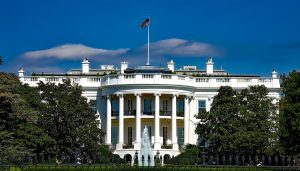Author: Steven Cernak
This blog has discussed dynamic competition several times recently, such as here and here. Very roughly, the idea is that innovation is the big driver of wealth creation and happens in a longer, more complex way than captured by neo-classical economics and some antitrust precedent. As previewed in our post about some of the highlights of the recent ABA Antitrust Section Spring Meeting, the Section’s Antitrust Law Journal recently published the first part of a symposium on dynamic competition. Below, I briefly summarize the articles, outline some key common concepts, and discuss what I learned from my involvement in some of the matters discussed.
Article Summaries
Aurelien Portuese, the Founding Director of the George Washington University Competition & Innovation Lab, edits and kicks off the symposium with a primer on dynamic competition. Portuese argues that competition should be viewed more like a dynamic, evolutionary process and less like the neo-classical search for an optimal equilibrium at any point in time. Antitrust law should safeguard innovation incentives and focus more on economic capabilities, not firms and markets. Such an argument is a “double-edged sword” that could help defendants or plaintiffs. Defendants could point to dynamic efficiencies and potential competition, which, quoting economist Joseph Schumpeter, “disciplines before it attacks.” Plaintiffs could use the same arguments to have antitrust prevent “unnatural selection of competition by market power,” such as through the acquisition of a potential competitor. Portuese sees dynamic competition as a more accurate assessment of real-world competition than static neo-classical economics but much more difficult to administer today.
David Teece, part of the management team at the Dynamic Competition Initiative, in addition to numerous other appointments, reminds readers that he has been extolling the importance of dynamic competition since at least his work with Thomas Jorde more than thirty years ago. Static competition analysis can be important but dynamic competition, driven by entrepreneurs fighting for future markets and not just competing in current markets, is where society gets the bigger gain. In evaluating competition, market analysts must not ignore supply side changes and must evaluate firm capabilities and the uncertainty that firms, sometimes even “monopolists,” face. Teece argues that we still do not understand how innovation occurs but insists that we should pay more attention to managerial science, not just industrial organization economics, and firm level evidence of company documents, executive narratives, and analyst reports.
The remaining articles in this part of the symposium are by leading scholars and practitioners without the same close ties to dynamic competition but who, nonetheless, find the concepts worth studying. Herb Hovenkamp provides his usual exhaustive survey of the statutory, theoretical, and case law uses of potential competition, especially the extensive treatment in several cases from approximately 1964-1974. Jorge Padilla, Douglas Ginsburg, and Koren Wong-Ervin take the advice of Teece and others and study the R&D expenditures of several large firms with large market shares where there might be competition for the market and find higher R&D expenditures than any monopolist living the “quiet life.”
Finally, Richard Gilbert and Douglas Melamed provide a “progress report” on antitrust for innovation, agreeing with the other authors that innovation can have an outsized impact on the economic welfare that antitrust law is designed to protect. Gilbert and Melamed survey the views of economists and antitrust law on the relationship between innovation and market power and find, with some notable exceptions like Schumpeter, that it was negative decades ago before moving to “complex.” They then illustrate that evolution through such antitrust matters as the Smog Decree, the General Motors/Toyota joint venture NUMMI, the National Cooperative Research Act, the 1995 Antitrust/IP Guidelines, and the abandoned Allison Transmission/ZF merger, which gave the antitrust community an illustration of an “innovation market.”
Key Common Concepts
Several themes run through the articles that are different than the usual antitrust analysis. For example, the Teece and Melamed/Gilbert articles, in particular, emphasize the need to examine the capabilities of competitors to better predict future competitive actions. As Gilbert sees the specific facts of the Allison/ZF, the capability to compete in the innovation market for automatic transmissions required current participation in the market for production of such transmissions. That might not always be true, as the rise of Amazon Web Services from an online bookstore makes clear, for example. So, the assessment of capabilities might require a search different than those with which most antitrust practitioners are familiar.
Second, Portuese explicitly and others implicitly explain that these theories could be used to expand or contract antitrust enforcement. If a merger can be challenged because it eliminates potential competition, then intellectual consistency requires that a different merger might not be challenged because the disciplining force of potential competition will remain. Either side of that story could be difficult to explain to a judge or in a social media post.
Finally, the underlying assumption of all the articles in this symposium is that more work is needed on the theories of competition and the information necessary for enforcers and courts to evaluate market actions. How does innovation occur – is it merely serendipity or does the presence of some elements at least make it more likely? When is such a dynamic competition analysis useful? If, as some of the authors assert, information now gathered by antitrust, like current market shares, is less important, what information should we be evaluating? And where might we get it?
Involvement in Dynamic Competition Matters
Some of the examples of matters involving dynamic competition concepts sparked vivid memories for me. For example, the Smog Decree and NCRA nicely illustrate the evolution of antitrust analysis of joint research efforts among competitors described by Melamed/Gilbert.
The Smog Decree was entered in 1969, twenty years before I joined General Motors full time. That decree effectively ended antitrust litigation alleging GM, Ford, and Chrysler had colluded to suppress certain emission-reduction equipment. Among other terms, the decree prevented joint R&D by the companies until it was modified in the mid 1980’s. Even after the decree was modified, I encountered several GM executives wary of doing any sort of joint research with the cross-town competitors (just another example that antitrust enforcement can affect the culture of a company).
More GM executives, however, caught the spirit of the 1984 National Cooperative Research Act that, as Melamed/Gilbert detailed, provided partial antitrust protection for certain joint research projects (production JVs were added several years later). At least among some auto industry executives, the goal was to mimic the success of joint efforts by Japanese competitors, often orchestrated by the Japanese government. As a result, I helped negotiate and administer many joint R&D efforts among the three competitors, eventually grouped under USCAR, with several still going strong. I cannot prove that the USCAR efforts improved innovation in any way but I am confident that they created no new antitrust issues. These joint efforts nicely illustrate that the NCRA’s loosening of antitrust restrictions made sense.
 The Antitrust Attorney Blog
The Antitrust Attorney Blog











